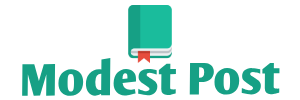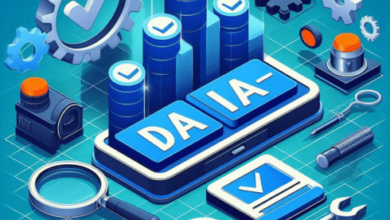Digital Marketing Strategies for Small Business Expansion

Expanding a small business in today’s digital age can feel overwhelming, but the right digital marketing strategies can make all the difference. I’ve seen firsthand how effective online tactics can propel a business from local favorite to industry leader. Whether you’re just starting out or looking to grow, understanding these strategies is crucial.
Digital marketing isn’t just a buzzword; it’s a powerful tool that can help you reach a wider audience, engage with customers, and drive sales. From social media marketing to search engine optimization, the opportunities are endless.
Let’s dive into the essential digital marketing strategies that can take your small business to the next level. For those in the handmade teapots industry, learning how to highlight your unique handcrafted teapots through digital marketing can significantly boost your online presence and attract a dedicated customer base.
Understanding Digital Marketing
Digital marketing uses online channels to promote products or services. The scope includes various activities and strategies that leverage the power of the internet. At its core, it enables businesses to reach potential customers on platforms they frequent.
Key Components
- Search Engine Optimization (SEO): SEO improves a website’s visibility on search engines. By optimizing content for relevant keywords, businesses can attract organic traffic from users searching for related information.
- Social Media Marketing: This strategy involves using social platforms to engage and interact with potential customers. Consistent and targeted campaigns on sites like Facebook, Instagram, and LinkedIn can boost brand awareness and foster customer loyalty.
- Content Marketing: Creating and distributing valuable content helps attract and retain customers. Blog posts, videos, infographics, and eBooks can position a business as an industry expert and build trust with the audience.
- Email Marketing: Email remains a powerful tool for direct communication. Personalized email campaigns can nurture leads and drive repeat business by promoting products, sharing news, or offering exclusive deals.
- Pay-Per-Click Advertising (PPC): PPC involves paying for ads that appear on search engines or social media. Businesses bid on keyword phrases relevant to their target market, paying only when a user clicks the ad. It offers immediate visibility and measurable ROI.
Benefits of Digital Marketing
- Cost-Effective: Traditional advertising methods can be costly. Digital marketing often requires less financial investment while delivering higher ROI, making it suitable for small businesses with limited budgets.
- Measurable Results: Digital marketing tools provide analytics that track performance. Metrics like click-through rates, conversion rates, and engagement levels help businesses refine their strategies and improve outcomes.
- Global Reach: Unlike local advertising, digital marketing facilitates reaching a global audience. This broader reach can be instrumental in small business expansion, allowing entry into new markets.
Examples of Successful Digital Marketing Campaigns
- Old Spice: The “Smell Like a Man, Man” campaign used humorous videos on social media to engage and attract a younger audience. The result was a significant increase in sales and brand awareness.
- Dollar Shave Club: By launching a viral video to introduce their subscription service, they tapped into a broad audience and gained substantial market traction with minimal initial investment.
Conclusion
By understanding digital marketing, small businesses can effectively implement strategies to expand. Leveraging SEO, social media, content, email, and PPC can drive growth and transition businesses from local to global players.
Benefits of Digital Marketing for Small Businesses
Digital marketing offers numerous advantages, making it indispensable for small business expansion. Here’s why it’s beneficial:
Cost-Effectiveness
Digital marketing provides a cost-effective way to promote products and services. Traditional marketing methods like TV ads and print media can be expensive, whereas digital platforms often require lower investments. For example, social media ads and email marketing campaigns enable targeting a large audience without substantial costs. Lower expenses mean better returns on investment, crucial for businesses with limited budgets.
Targeted Audience Reach
One of the primary benefits of digital marketing is the ability to reach targeted audiences. Platforms like Facebook, Google, and LinkedIn allow configuring ads based on demographics, interests, and behaviors. This precision ensures that marketing efforts focus on those most likely to convert. For instance, a local bakery can target ads to people in nearby areas interested in baking or desserts, increasing the chances of gaining new customers.
Real-Time Analytics
Digital marketing tools offer real-time analytics, which enable businesses to track performance instantly. Metrics like click-through rates, page views, and conversion rates provide actionable insights. Google Analytics and social media dashboards show how campaigns perform, allowing quick adjustments for optimization. Real-time data helps focus on strategies that work and pivot away from those that don’t, ensuring continuous improvement in marketing efforts.
Essential Digital Marketing Strategies
Effective digital marketing strategies are crucial for small businesses aiming to expand. I’ll cover the key strategies necessary for success.
Search Engine Optimization (SEO)
SEO enhances visibility on search engines. By using relevant keywords related to products and services, websites can rank higher in search results, attracting organic traffic. Tools like Google Analytics and SEMrush help monitor performance and adjust strategies accordingly. Optimize both on-page elements (titles, meta descriptions) and off-page factors (backlinks) to improve rankings.
Social Media Marketing
Social media platforms connect businesses with their audience. By creating engaging content on platforms like Facebook, Instagram, and LinkedIn, small businesses reach broader demographics. I engage followers by posting regularly, responding to comments, and running targeted ads. Analytics tools within these platforms help track engagement and adjust efforts for better results.
Content Marketing
Content marketing builds brand authority. By producing high-quality blog posts, videos, and infographics that offer value, businesses attract and retain customers. I focus on addressing customer pain points and weaving in relevant industry trends. Tools like HubSpot and WordPress assist in content creation and distribution, ensuring it reaches the right audience.
Email Marketing
Email marketing maintains direct communication with customers. By sending personalized newsletters and promotional offers, businesses nurture relationships and drive sales. I use platforms like Mailchimp and Constant Contact to segment email lists and automate campaigns. Tracking open rates and click-through rates helps refine strategies for better engagement.
Pay-Per-Click Advertising (PPC)
PPC drives immediate traffic through paid ads. By bidding on relevant keywords, businesses can appear at the top of search results. I use Google Ads and Bing Ads to create targeted campaigns that reach specific audience segments. Monitoring conversion rates and adjusting bids ensure optimal return on investment for each campaign.
Creating a Digital Marketing Plan
A comprehensive digital marketing plan drives small business expansion, optimizing growth by implementing targeted strategies and analyzing performance.
Setting Objectives
Precise objectives guide digital marketing efforts. I suggest setting SMART goals (Specific, Measurable, Achievable, Relevant, Time-bound) to ensure clarity and focus. For example, aim to increase website traffic by 20% in six months using SEO and content marketing. Objectives align marketing tactics with business goals.
Identifying Target Audience
Identify your target audience to ensure marketing messages reach the right people. Use demographic data (age, gender, location), psychographic data (interests, behaviors), and analytics tools (Google Analytics, Facebook Insights) to define your audience. Create buyer personas to tailor content and campaigns effectively.
Budget Allocation
Allocate budget based on priorities and potential ROI of different strategies. Divide the budget among SEO, social media marketing, content creation, PPC, and email marketing based on business needs. For instance, allocate 40% to SEO and content marketing if organic traffic is a top priority. Monitor and adjust spending to optimize results.
Tools and Resources for Digital Marketing
To maximize the effectiveness of digital marketing strategies, it’s essential to utilize the right tools and resources. Below are key categories and recommended tools for each.
SEO Tools
SEO tools improve search engine rankings, driving organic traffic to your website. I recommend these:
- Google Analytics: Tracks and reports website traffic, providing insights into user behavior and engagement.
- SEMrush: Offers competitive analysis, keyword research, and backlink tracking.
- Ahrefs: Analyzes backlinks, conducts comprehensive site audits, and identifies keyword opportunities.
- Moz: Provides SEO audits, rank tracking, and on-page optimization insights.
Social Media Management Tools
Social media management tools streamline and enhance your social media marketing efforts. Consider these:
- Hootsuite: Schedules posts, monitors social media conversations, and measures campaign performance across multiple platforms.
- Buffer: Manages multiple social accounts, schedules posts, and provides analytics.
- Sprout Social: Offers social listening, engagement features, and detailed reporting.
- Canva: Creates visually appealing social media graphics and posts.
Email Marketing Tools
Email marketing tools automate email campaigns and improve communication with your audience. These are essential tools:
- Mailchimp: Automates email campaigns, manages mailing lists, and provides analytics.
- Constant Contact: Offers customizable email templates, list management, and real-time reporting.
- Sendinblue: Provides email automation, transactional emails, and SMS marketing.
- ConvertKit: Caters to creators, offering customizable sign-up forms, landing pages, and automated email sequences.
Using these tools can optimize your digital marketing efforts, enabling better audience engagement and improved business growth.
Measuring Success and Adjusting Strategies
Digital marketing strategies can only lead to expansion if measured and adjusted based on their success. It’s essential to evaluate key metrics and refine tactics for optimal performance.
Key Performance Indicators (KPIs)
Identifying relevant KPIs allows businesses to measure the success of their digital marketing efforts. Metrics like conversion rates, click-through rates (CTR), and customer acquisition costs (CAC) provide valuable insights. For example:
- Conversion Rates: Measure the percentage of visitors who complete a desired action. If a landing page has a 5% conversion rate, it indicates effectiveness in turning visitors into leads or customers.
- Click-Through Rates (CTR): Calculate the ratio of users who click on a link or ad to the number of total users who view it (impressions). A high CTR often suggests that the ad content resonates with the target audience.
- Customer Acquisition Costs (CAC): Determine the total cost of acquiring a new customer. Comparing CAC across different campaigns can help identify the most cost-effective strategies.
Analyzing Campaign Performance
Regularly analyzing campaign performance enables businesses to understand what’s working and what isn’t. Use tools like Google Analytics, SEMrush, and Hootsuite to track and evaluate various metrics. Focus on data such as:
- Traffic Sources: Identify whether visitors are coming from organic search, social media, email campaigns, or paid ads. Knowing this helps concentrate efforts where they generate the most traffic.
- Engagement Metrics: Examine page views, average session duration, and bounce rates. Low engagement metrics might indicate that website content needs improvement.
- ROI Analysis: Assess the return on investment for each digital marketing effort. Calculate net profit divided by the cost of the campaign to determine its efficiency and profitability.
Making Data-Driven Adjustments
Once performance data is collected and analyzed, it’s crucial to make informed adjustments. Tailor strategies based on findings to enhance engagement and drive growth:
- Optimizing Underperforming Content: Revise blog posts, social media content, or ads that aren’t achieving desired results. Adjust keywords, headlines, or visuals to better align with audience preferences.
- A/B Testing: Conduct A/B tests on different elements of your marketing campaigns, such as subject lines in emails or ad headlines. Analyze which variations perform better and implement the effective ones.
- Budget Reallocation: Shift marketing budgets towards high-performing channels. If a certain social media platform yields higher engagement, allocate more funds to expand efforts on that platform.
Measuring success and adjusting strategies based on concrete data ensures continuous improvement and effective growth in digital marketing.




